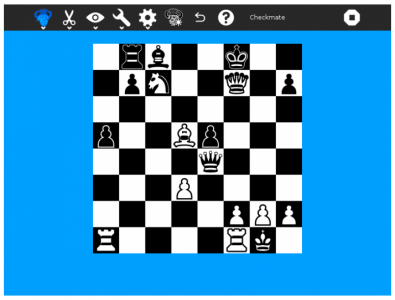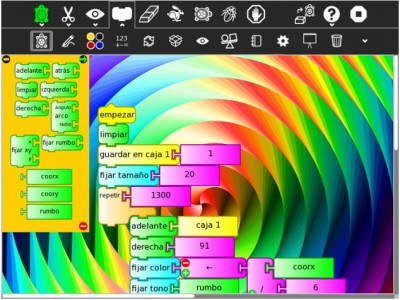By Rodrigo Arboleda
On Wednesday February 27th, Reuters published the article “Poor kids with laptops read less, do more chores in Peru -study“, based on the working document of the Inter-American Development Bank entitled “Home Computers and Child Outcomes: Short-Term Impacts from a Randomized Experiment in Peru “. I would like to make some observations on the vision of One Laptop Per Child, of which I am CEO and President:
Situation
As an organization we know first hand this report, published by the IDB, which expressly states that it tries not to evaluate the One Laptop Per Child initiative or educational one to one projects. It is further known that the same organization designed an experiment using the OLPC XO laptop for children who do not belong to the OLPC program in Peru in order to understand and measure the impact of the computer in the home. Therefore, the experiment is different from a comprehensive intervention based on a one to one learning project, such as promoted by multiple organizations including OLPC. A comprehensive study involves the education system, teachers, family and community.
Like this experiment, numerous studies and research in the last decade by recognized academics (1) have shown that the provision of technology alone has no effect unless there is an appropriate intervention process. It is for this reason that the results of the experiment showed little effect and did not generate changes in reading habits, cognitive skills or academic achievement.
The OLPC program
Using the preliminary results of this experiment as a basis for governments to promote one to one learning programs is wrong because the objectives of the programs are many and varied. The plans for program implementation must consider the local objectives and context. The computer at home is just one element in those plans. What has been confirmed by experts is that technology alone will not make any difference.
Results in countries where the program is implemented
To illustrate this, consider two major projects within the ecosystem of OLPC. The first, One Laptop Per Child in Caacupé, was implemented by Paraguay Educa Foundation, which aims to make every child in Paraguay develop technological and life skills. The second project, in Colombia, which began with advice and funds from the IDB, has been implemented by the Barefoot Foundation. Unlike the project objectives of Paraguay, the Barefoot Foundation seeks to improve skills in the areas of Spanish and Mathematics in grades two and three of primary schools.
Both programs have developed implementation plans to meet those objectives and have articulated infrastructure, connectivity, awareness, community service, teacher training, logistics, maintenance and repair, and other elements to achieve their goals. Significant achievements have been reported.
First report of the IDB on One Laptop Per Child program Peru
In a report also published by the Inter-American Development Bank in March 2012, entitled “Technology and Child Development: Evidence from the One Laptop per Child Program“ the report presents findings related to cognitive abilities, the results of the Raven test, which showed a positive impact. In this study, after 15 months of implementation of the program, with a sample of 319 rural schools (which is significant), children in the OLPC project in this country have an advantage on average of 5 months in the development of their cognitive abilities with respect to children who have not been helped by the program.
This study perhaps shows that when fully implemented, the OLPC program proves to be effective, develops skills and responds to the main premises of One Laptop Per Child. This study shows the difference of an isolated experiment of computers at home without a comprehensive intervention strategy that did not generate impact.
Latest report submitted by the IDB, “Home Computers and Child Outcomes: Short-Term Impacts from a Randomized Experiment in Peru“
It was an experiment conducted by the IDB, which gave away laptops for home use, to determine whether it would increase reading habits. In this case the experiment did not try to determine whether the One Laptop Per Child program outcomes were achieved but rather whether through the use of technological tools an increase in reading habits could be shown.
We would like to emphasize the one to one learning project led the Zamora Teran Foundation in Nicaragua. The Foundation, in partnership with USAID has developed an important strategy that includes literacy training and support to teachers, design and delivery of manuals, and a collection and delivery of digital resources for teachers, students and parents. This initiative has begun to yield significant results. The results and findings of this project let us reiterate that intervention strategies to achieve a real impact on education of children through the use of technology require a comprehensive intervention plan that involves all actors in the educational community that goes beyond the provision of computers.
For this reason OLPC continues to expand, to use the 7 years’ of acquired experience working on the integration of technology in education and social projects and to implement our philosophy: rethinking education.
[1] Harrison, C., T. Fisher, et al. (2002). ImpaCT2: the Impact of Information and Communication Technologies on Pupils’ Learning and Attainment.. Coventry, DfES
– Ting Seng Eng (2005). The impact of ICT on learning: A review of research. International Education Journal, 6(5), 635-650.
– Underwood, Jean D. M., British Educational Communications and Technology Agency, corp creator. (2009) The impact of digital technology : a review of the evidence of the impact of digital technologies on formal education.










